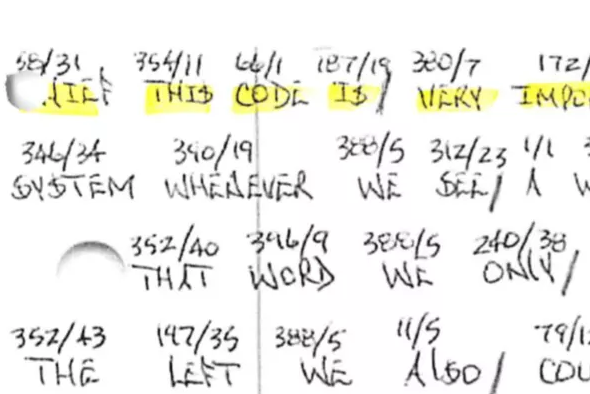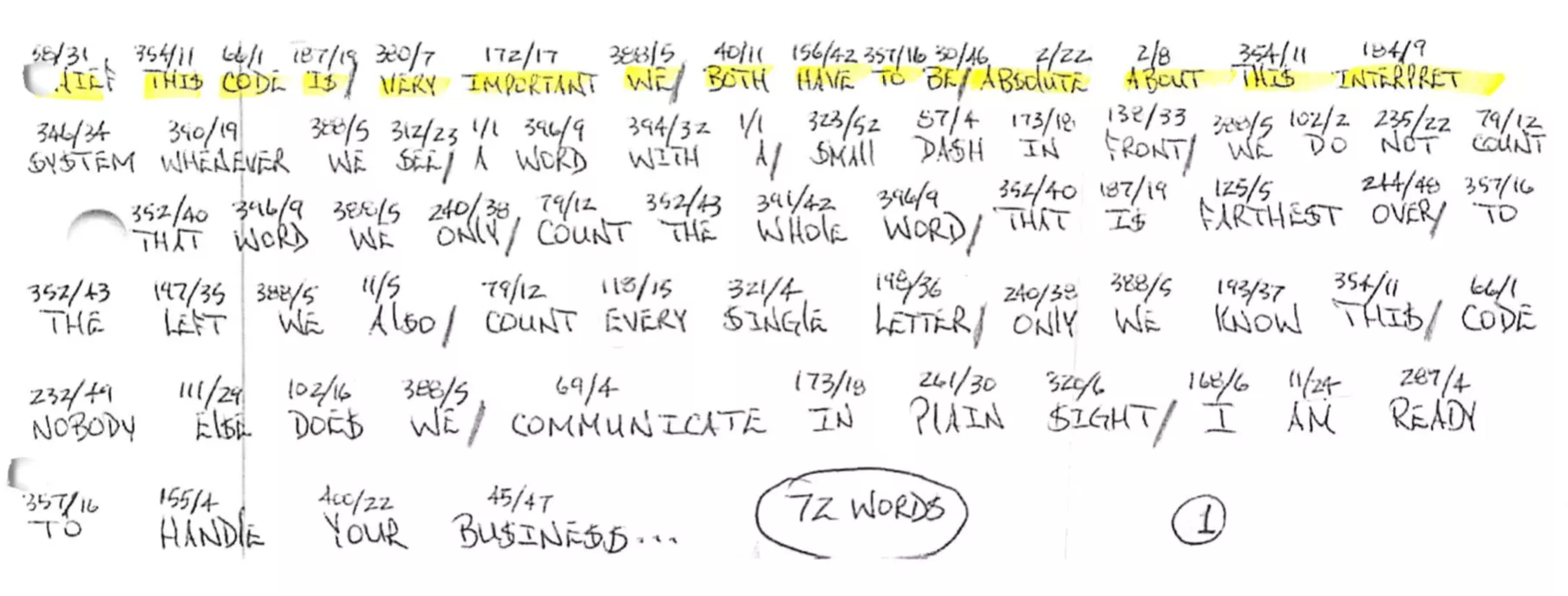A newspaper article published earlier this year covers an encrypted message written by a supermax-prison inmate. The content of this note is about steganography.
Let me start with some information for my German-speaking readers: The radio station Bayern 2 has aired a report about the history of cryptology, featuring a few statements from me. In addition, Carola Dahlke from the Deutsches Museum can be heard. Check here for the radio report and here for an accompanying article.
A murderer’s ciphertext
Let’s now move from history to the present. One of the United States’ most notorious gang criminals is Larry Hoover (born 1950), who is described on Wikipedia as follows:
Larry Hoover is an American gang leader, a founder of the Chicago street gang called the Gangster Disciples. Hoover is currently serving six life sentences at the ADX Florence prison in Florence, Colorado.
…, a leading expert on the Zodiac Killer’s ciphers, has made me aware of a newspaper article mentioning an encrypted message Hoover created while in prison. Trying to communicate in cipher is one of three disciplinary violations the former gang boss was accused of when applying for a reduced sentence, the others being holding down an inmate while another one punched him and threatening to set fires and flood prison cells.
Here’s the message:
As happens often when criminals use encryption, not much is known about the background of this message. Apparently, the authorities don’t want to let the public know how they deal with ciphers and which ones they can solve. For this reason, we don’t know about the recipient of the message, how it was transported, and how it was deciphered.
At least, we know the plaintext of the message, as it is written below the ciphertext:
CHIEF, THIS CODE IS VERY IMPORTANT … WHENEVER WE SEE A WORD WITH A SMALL DASH IN FRONT, WE DO NOT COUNT THAT WORD. WE ONLY COUNT THE WHOLE WORD THAT IS THE FARTHEST OVER TO THE LEFT. WE ALSO COUNT EVERY SINGLE LETTER. ONLY WE KNOW THIS CODE. NOBODY ELSE DOES. WE COMMUNICATE IN PLAIN SIGHT. I AM READY TO HANDLE YOUR BUSINESS.
The encryption system used is a dictionary code based on the Merriam-Webster’s Pocket Dictionary – a book the prison inmates apparently had access to. I assume that, for instance, 57/4 stands for the fourth word on page 57. To my regret, I can’t verify this assumption, as I only have an e-book version of the Merriam-Webster’s available and this one doesn’t gave page numbers. The latest edition of the dictionary is from 2006, which makes it likely that this is the one the prison inmates used.
A steganographic method?
The content of the message is note-worthy for everybody interested in encryption. Apparently, the note describes a steganographic technique that hides text in text and is intended to be used by the prisoners for hidden information exchange. The following steps of this method can be retreived from the plaintext:
- If a word [of the cover text] has a small dash in front, it doesn’t count.
- The left-most complete word [of the cover text] counts.
- Every single letter [of the cover text] counts.
This description might not be complete. The article mentions other encrypted messages used by Hoover and his fellows, but these ciphertexts are not provided. Perhaps, one of these contains more information about the steagnographic technique in question.
It would be interesting to know, on what kind of text the said information hiding method was applied. Did the prisoners have the possibilitiy to send each other written notes? Or was this technique meant to be used for secretly communication with persons outside the prison?
Perhaps, a reader can find out more about Larry Hoover’s encryption and steganography methods, If so, please leave a comment.
Follow @KlausSchmeh
Further reading: How prisoner of war Donald Hill encrypted his diary
Linkedin: https://www.linkedin.com/groups/13501820
Facebook: https://www.facebook.com/groups/763282653806483/





Kommentare (2)